To locate null point deflection battery key (K1) ios pressed before the galvanometer (K2) Explanation why?
To locate the null point deflection in a potentiometer experiment, it is essential to understand the sequence of pressing the keys (K1 and K2) in the circuit. Here is the step-by-step explanation:
Step 1: Understanding the Circuit Configuration
In the experiment, we have a battery connected to a potentiometer wire, a key K1 (which connects the battery), a galvanometer with key K2, and a jockey used to find the null point.
Step 2: Pressing Key K1
First, we press key K1. This connects the battery to the potentiometer wire, allowing a stable current to flow through the wire. It is crucial to establish a steady current in the potentiometer wire before making any measurements.
Step 3: Stabilizing the Current
Once K1 is pressed, the current through the potentiometer wire stabilizes. A stable current ensures that the voltage drop across the potentiometer wire is uniform and predictable, which is necessary for accurately locating the null point.
Step 4: Pressing Key K2
After the current is stabilized, we then press key K2, which connects the galvanometer to the circuit. This allows us to measure the current through the galvanometer.
Step 5: Locating the Null Point
As the jockey is moved along the potentiometer wire, we look for the point where the galvanometer shows a null deflection (zero current). This point indicates that the potential difference across the galvanometer is equal to the potential difference across the segment of the potentiometer wire.
Step 6: Consequences of Incorrect Sequence
If K2 is pressed before K1, the sudden connection of the galvanometer can cause a rapid increase in current. This can induce a back EMF in the galvanometer coil, potentially damaging it. Therefore, pressing K1 first prevents this issue.
Conclusion
In summary, pressing K1 before K2 ensures that the current is stable and prevents damage to the galvanometer, allowing for accurate measurement of the null point deflection.
---
In the experiment, we have a battery connected to a potentiometer wire, a key K1 (which connects the battery), a galvanometer with key K2, and a jockey used to find the null point.
First, we press key K1. This connects the battery to the potentiometer wire, allowing a stable current to flow through the wire. It is crucial to establish a steady current in the potentiometer wire before making any measurements.
Once K1 is pressed, the current through the potentiometer wire stabilizes. A stable current ensures that the voltage drop across the potentiometer wire is uniform and predictable, which is necessary for accurately locating the null point.
After the current is stabilized, we then press key K2, which connects the galvanometer to the circuit. This allows us to measure the current through the galvanometer.
As the jockey is moved along the potentiometer wire, we look for the point where the galvanometer shows a null deflection (zero current). This point indicates that the potential difference across the galvanometer is equal to the potential difference across the segment of the potentiometer wire.
If K2 is pressed before K1, the sudden connection of the galvanometer can cause a rapid increase in current. This can induce a back EMF in the galvanometer coil, potentially damaging it. Therefore, pressing K1 first prevents this issue.
In summary, pressing K1 before K2 ensures that the current is stable and prevents damage to the galvanometer, allowing for accurate measurement of the null point deflection.
Topper's Solved these Questions
- BOOK - DC PANDEY ENGLISHCHAPTER - CURRENT ELECTRICITYEXERCISE - Example Type 12videos
CURRENT ELECTRICITY
- BOOK - DC PANDEY ENGLISHCHAPTER - CURRENT ELECTRICITYEXERCISE - Example Type 21videos
CURRENT ELECTRICITY
- BOOK - DC PANDEY ENGLISHCHAPTER - COMMUNICATION SYSTEMEXERCISE - Subjective11videos
COMMUNICATION SYSTEM
- BOOK - DC PANDEY ENGLISHCHAPTER - ELECTROMAGNETIC INDUCTIONEXERCISE - Medical entrances gallery25videos
ELECTROMAGNETIC INDUCTION
Similar Questions
To locate null point, deflection battery key K1 is pressed before the galvanometer key K2. Explain why?
View SolutionAssertion To locate null defiection the battery key (K1) is pressed first and then the galvanom eter key (K2)
Reason if first K2 is pressed and then as soon as K1 is pressed current suddenly try to increase so due to self induction a large stopping emf is generated in galvanometer which may damage the glavanometer .View SolutionThe galvanometer deflection , when key K1 is closed but K2 is open equals θ0 (see figure ) On closing k2 also and adjusting R2 to 5Ω , the deflection in galvanometer becomes θ05 the resistnce of the galvanometer is then , given by [Neglect the internal resistance of battery]:
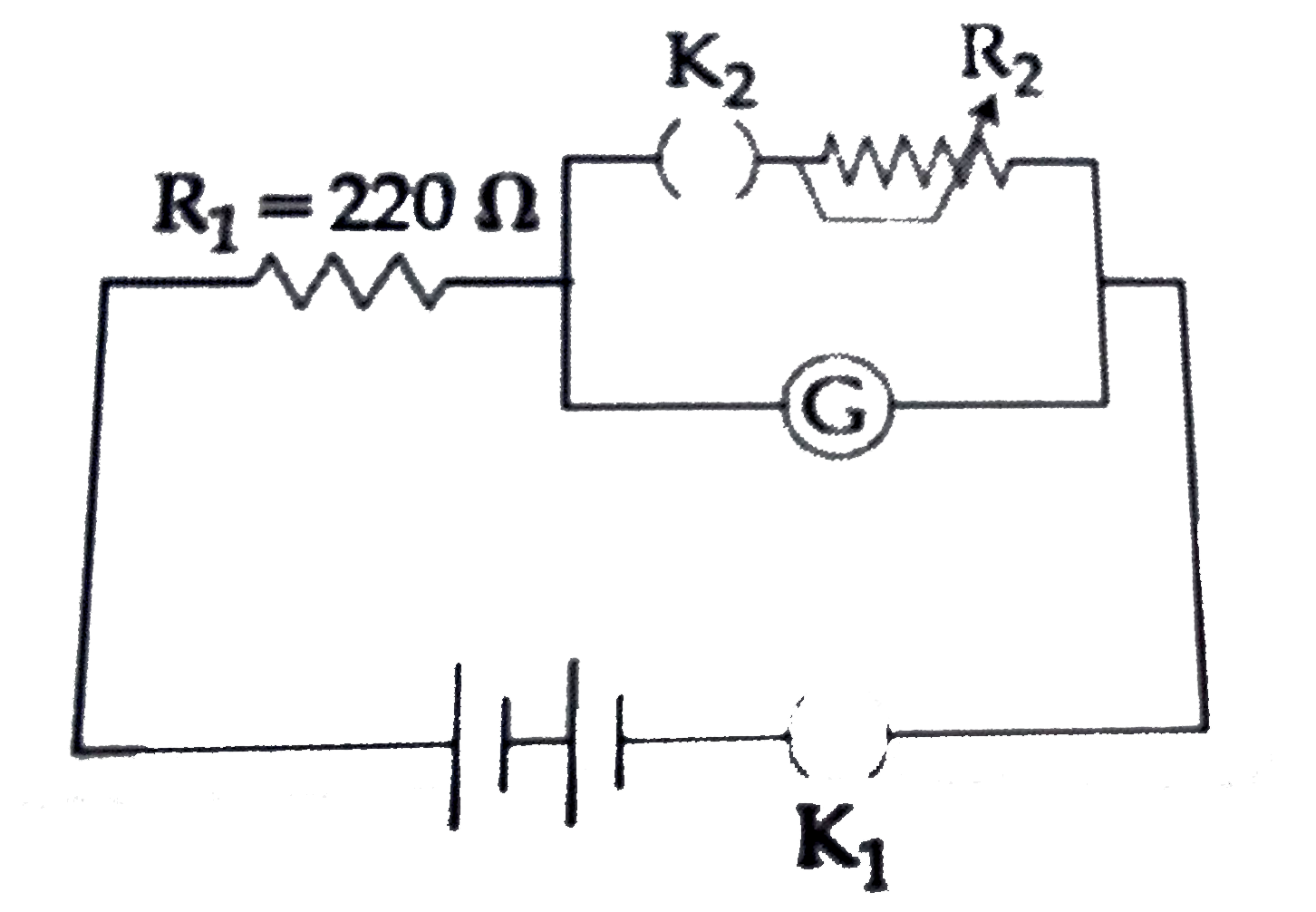 View Solution
View SolutionThe resistances P,Q,R and S in the bridge shown are adjusted such that the deflection in the galvanometer G is zero when both the keys K1 and K2 are inserted. The galvanometer will show a momentary deflection if
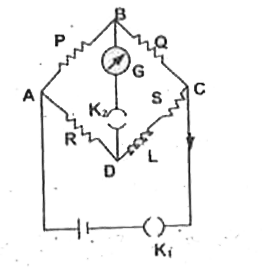 View Solution
View SolutionTwo coils C1 and C2 are kept coaxially as shown the coil C1 is connected to a battery and the coil C2 is connected to a galvanometer. The deflection in galvanometer can be increased by
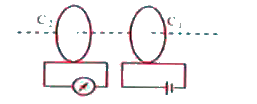 View Solution
View SolutionIn the arrangement shown in figure when the switch S2 is open, the galvanometer shown no deflection for l=L/2. When the switch S2 is closed, the galvanometer shown no deflection for l=5L/12. The internal resistance (r) of 6V cell, and the emf E of the other battery are respectively
 View Solution
View SolutionIn the given circuit, calculate the ratio of currents through the battery if (1) Key K1 is pressed, K2 open and then (2) Key K2 is pressed, key K1 is opened
 View Solution
View SolutionAs shown in the figure initially switch k1 is open and k2 is closed and deflection of galvanometer is x. Now both switch are closed then the deflection in galvanometer is x/5 (given RH=5Ω). The resistance of galvanometer is
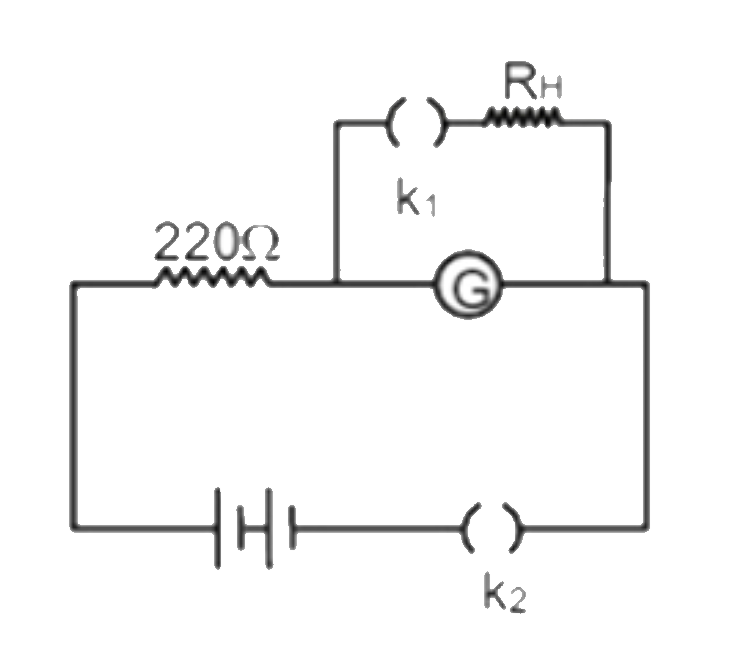 View Solution
View SolutionA moving coil galvanometer has resistance 50Ω and it indicates full deflection at 4 m A current. A voltmeter is made using this galvanometer and a 5kΩ resistance. The maximum voltmeter, will be close be :
View SolutionTwo students ‘X’ and ‘Y’ perform an experiment on potentiometer separately using the circuit given: Keeping other parameters unchanged, how will the position of the null point be affected it
(i) X’ increases the value of resistance R in the set-up by keeping the key K1 closed and the key K2 open?
(ii) Y’ decreases the value of resistance S in the set-up, while the key K2 remain open and the key K1 closed? Justify.
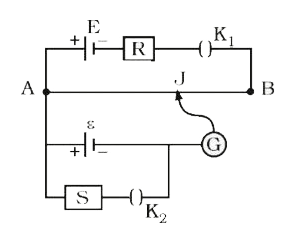 View Solution
View Solution

